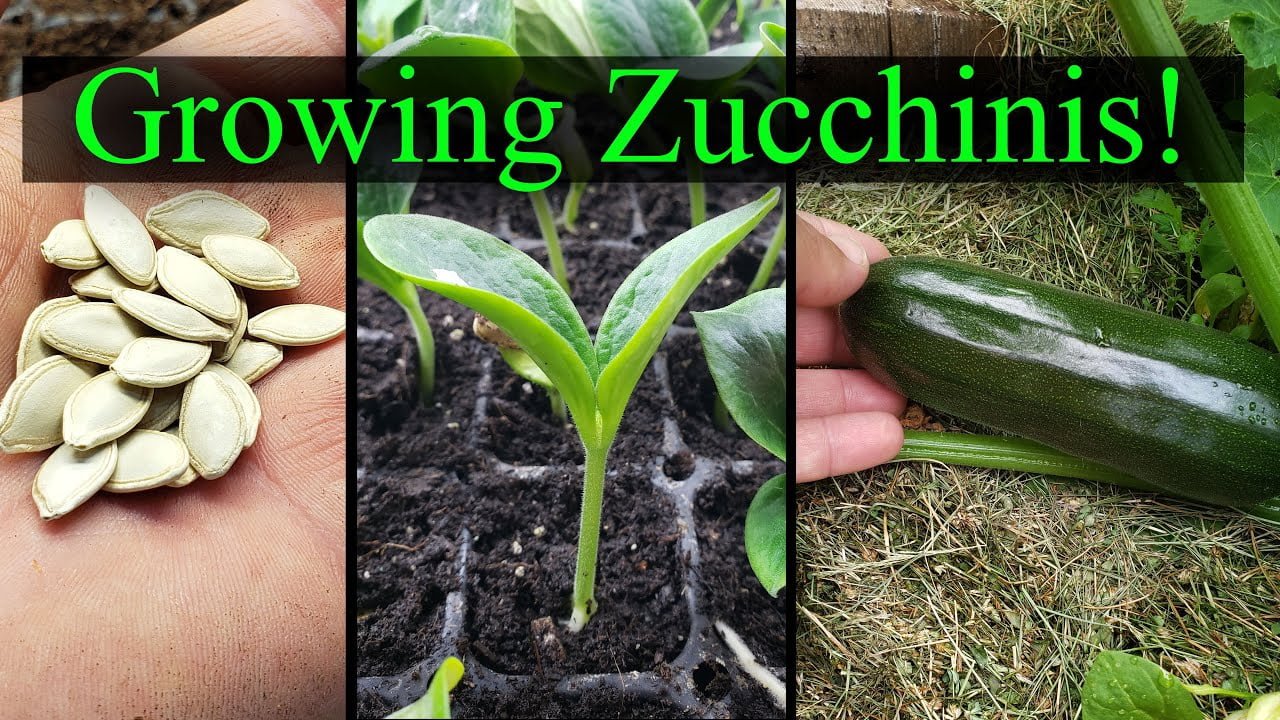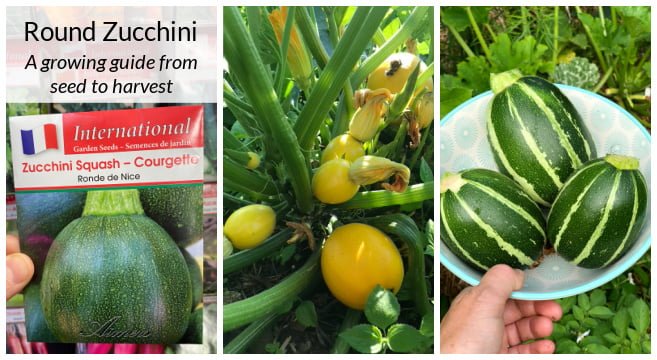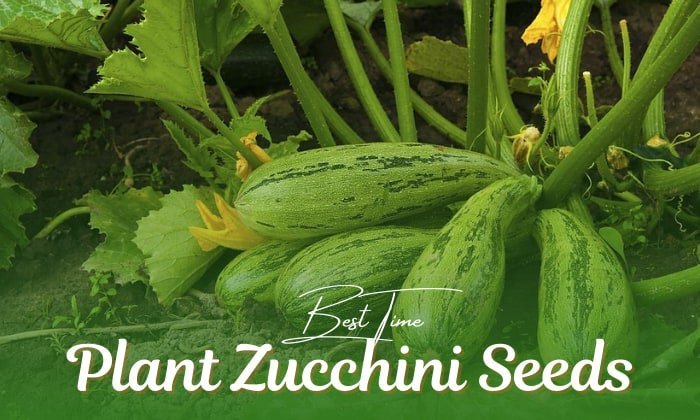Are you a gardening enthusiast looking to grow your own delicious zucchini? Look no further! This comprehensive guide will provide you with all the necessary information on planting zucchini seeds. From the perfect depth to plant your seeds to the ideal growing conditions, this article has got you covered. Whether you’re a seasoned gardener or a novice, this guide will help you ensure a successful zucchini harvest. So grab your gardening gloves and let’s get started on your zucchini-growing adventure!
Choosing the Right Location
When it comes to planting zucchini seeds, choosing the right location is crucial for their success. Zucchini plants thrive in full sunlight, so it’s essential to select an area in your garden that receives at least 6-8 hours of direct sunlight each day. This will ensure that your zucchini plants receive the necessary energy to grow and produce an abundant harvest.
Sunlight Requirements
As mentioned earlier, zucchini plants require plenty of sunlight to thrive. When selecting a spot for your zucchini plants, make sure it’s not shaded by trees or tall structures. A location that faces south or west is ideal as it receives the most sunlight throughout the day. By providing your zucchini plants with ample sunlight, you’ll be setting them up for success and maximizing their growth potential.
Soil Requirements
Another crucial factor to consider is the soil quality in the chosen location. Zucchini plants prefer well-draining soil that is rich in organic matter. Before planting your zucchini seeds, it’s important to test your soil’s pH level. Zucchini plants thrive in a slightly acidic to neutral pH range of 6.0 to 7.0. If your soil’s pH is lower or higher, you can make appropriate amendments to achieve the optimal range. Additionally, mixing compost or aged manure into the soil will improve its fertility and provide essential nutrients for your zucchini plants.
Spacing
Proper spacing is essential to allow your zucchini plants to grow and spread comfortably. Each zucchini plant requires approximately 3-4 feet of spacing between each plant. This ensures that they have ample room for their large leaves and sprawling vines. Adequate spacing also promotes better air circulation, reducing the risk of fungal diseases. Plan your garden layout accordingly, giving each zucchini plant enough space to flourish and thrive.
Preparing the Soil
Before planting your zucchini seeds, it’s crucial to prepare the soil properly. This involves clearing the area, improving drainage, and amending the soil to create an optimal growing environment for your zucchini plants.
Clearing the Area
Start by clearing the area of any weeds, rocks, or debris. Weeds can compete for nutrients, water, and sunlight, limiting the growth of your zucchini plants. Remove them by hand or use a garden tool, ensuring that the area is clear and ready for cultivation.
Improving Drainage
To prevent waterlogged soil, it’s essential to ensure proper drainage. If your soil retains water for an extended period after rainfall, consider incorporating organic matter, such as compost or well-rotted manure, into the soil. This will help improve its structure, allowing excess water to drain more effectively.
Amending the Soil
Zucchini plants thrive in nutrient-rich soil. To provide them with the necessary nutrients, amend the soil with compost or well-rotted manure. These organic materials will enhance the soil’s fertility, improve its texture, and contribute to better overall plant growth. Mix the compost or manure evenly into the soil, ensuring that it is well incorporated before planting your zucchini seeds.

Germinating the Seeds
Once the soil is prepared, it’s time to germinate your zucchini seeds. There are two methods you can use: indoor germination or direct sowing.
Indoor Germination
Indoor germination allows you to get a head start on the growing season and ensures a higher germination success rate. Start by filling small containers or seed trays with high-quality seed starting mix. Plant the zucchini seeds about 1 inch deep in each container and keep them in a warm and brightly lit area. Maintain consistent moisture, but avoid overwatering. The seeds should germinate within 5-7 days, and once they develop their first set of true leaves, they are ready for transplantation.
Direct Sowing
Direct sowing is an alternative method where you plant the zucchini seeds directly into the prepared garden soil. Wait until the soil has warmed up to 60°F (15°C) or above before sowing the seeds. Plant the seeds about 1 inch deep and 2-3 feet apart, following the spacing recommendations mentioned earlier. Keep the soil consistently moist until germination occurs. This method requires patience, as germination may take longer due to external factors such as soil moisture and temperature.
Transplanting Seedlings
If you chose the indoor germination method, you’ll need to transplant your zucchini seedlings once they have reached the ideal size. Proper transplanting techniques will help ensure their successful establishment in the garden.
Ideal Seedling Size
Your zucchini seedlings should have developed their first set of true leaves before transplanting. True leaves are the second set of leaves that emerge after the initial sprout leaves. At this stage, the seedlings are more robust and better equipped to handle the transplant shock.
Hardening Off Seedlings
Before transplanting your zucchini seedlings directly into the garden, it’s important to harden them off gradually. Start by placing the seedlings outdoors for a few hours each day, gradually increasing the time over a period of 7-10 days. This process helps acclimate the seedlings to the outdoor conditions, including exposure to sunlight, wind, and fluctuating temperatures. Once they have hardened off, your zucchini seedlings are ready for transplantation.
Transplanting Properly
When transplanting your zucchini seedlings, dig a hole deep enough to accommodate the entire root system. Gently remove the seedlings from their containers, being careful not to damage the delicate roots. Place each seedling in the hole, making sure the soil level matches the top of the root ball. Fill the hole with soil, firming it gently around the base of the seedlings. Water thoroughly after transplanting to help settle the soil and reduce transplant shock.

Watering Techniques
Proper watering techniques are crucial for the health and productivity of your zucchini plants. Follow these guidelines to maintain optimal soil moisture without overwatering.
Watering Frequency
Zucchini plants need consistent moisture, especially during dry periods. Water deeply and thoroughly, ensuring that the soil is moist to a depth of at least 6 inches. As a general rule, water your zucchini plants when the top inch of soil becomes dry. However, be cautious not to overwater, as this can lead to root rot and other complications.
Irrigation Methods
While hand watering with a watering can or hose is an option, using a drip irrigation system or soaker hose is highly recommended. These methods provide a slow and steady release of water directly to the soil, minimizing evaporation and water waste. Additionally, they prevent the foliage from getting wet, reducing the risk of fungal diseases.
Avoiding Overwatering
Overwatering zucchini plants can be detrimental to their growth and overall health. It’s important to strike a balance between providing enough moisture and avoiding excess water. Too much water can lead to root rot, stunted growth, and increased vulnerability to diseases. Monitor the moisture levels in the soil and adjust your watering accordingly to maintain a proper balance.
Fertilizing Zucchini Plants
Fertilizing your zucchini plants will ensure they receive the necessary nutrients for vigorous growth and abundant fruit production. Follow these guidelines to fertilize your zucchini plants effectively.
Choosing the Right Fertilizer
Zucchini plants have high nutrient requirements, particularly for nitrogen, phosphorus, and potassium. Choose a balanced fertilizer with a ratio of 10-10-10 or 14-14-14 to provide these essential nutrients. Organic options like composted manure or fish emulsion are also great choices as they enrich the soil with organic matter and release nutrients gradually.
Application Schedule
Apply fertilizer to your zucchini plants at planting time and continue with regular applications throughout the growing season. Start by incorporating a balanced fertilizer into the soil before planting. Once the plants have established, side-dress them with a tablespoon of fertilizer every 4-6 weeks. Water the plants after fertilizing to help distribute the nutrients evenly.
Avoiding Excessive Fertilization
While fertilizing is important, it’s crucial not to overdo it. Excessive fertilization can lead to excessive vegetative growth at the expense of fruit production. It can also lead to nutrient imbalances and burning of the plants. Always follow the recommended application rates provided by the fertilizer manufacturer and monitor your plants for any signs of nutrient deficiencies or excesses.

Mulching Zucchini Plants
Mulching is a beneficial practice for zucchini plants that offers several advantages, including moisture retention, weed suppression, and temperature regulation. Here’s what you need to know about mulching your zucchini plants.
Benefits of Mulching
Mulching provides a protective layer over the soil, which helps retain moisture by reducing evaporation. This is particularly important during hot summer months when water loss from the soil is accelerated. Additionally, mulch acts as a barrier, preventing weed growth and reducing competition for nutrients and water. Mulching also helps regulate soil temperature, keeping it cooler during hot periods and insulating it during colder periods.
Choosing the Right Mulch
Select a suitable mulch material for your zucchini plants, such as straw, dried leaves, or wood chips. Organic materials like straw and leaves break down over time, enriching the soil with organic matter and nutrients. Avoid using freshly cut grass clippings as they can become compacted and restrict airflow around the plant stems.
Applying Mulch Properly
Apply a layer of mulch around the base of your zucchini plants, ensuring it covers the soil surface but doesn’t touch the stems directly. Leave a small gap between the mulch and the plant stems to prevent moisture accumulation and potential rot. Apply a layer of mulch about 2-3 inches thick, replenishing it as needed throughout the growing season.
Supporting Zucchini Plants
Supporting your zucchini plants offers numerous benefits, including improved air circulation, reduced risk of root diseases, and better fruit quality. Use these techniques to provide the necessary support for your zucchini plants.
Benefits of Support
By supporting your zucchini plants, you help keep the foliage off the ground, minimizing contact with moisture and reducing the risk of fungal diseases. Support structures also promote better air circulation, which helps prevent the development of mold or mildew on the leaves. Additionally, supporting the plants prevents the fruits from resting on the soil, decreasing the likelihood of rot or damage.
Types of Support Structures
There are several support structures you can use for your zucchini plants, depending on your garden layout and personal preference. A trellis is a popular choice, providing vertical support for the plants to climb and allowing easier access for harvesting. Another option is to use stakes or cages, which provide individual support for each zucchini plant. Whichever method you choose, ensure that the support structure is sturdy enough to withstand the weight of the plants and fruits.
Implementing Support
When the zucchini plants are still young and small, gently direct the main stem towards the support structure. Use soft plant ties or garden twine to secure the stem without causing damage. As the plants grow, continue to tie the main stem to the support structure, ensuring it remains upright and well-supported. Regularly check the ties to prevent any constriction as the plant expands.

Identifying and Managing Common Pests and Diseases
Like any plant, zucchini can be susceptible to various pests and diseases. Being able to identify them and implementing appropriate control measures is essential for maintaining healthy zucchini plants.
Common Zucchini Pests
Some common pests that may attack zucchini plants include squash bugs, cucumber beetles, and squash vine borers. Monitor your plants regularly for signs of infestation, such as wilting, yellowing leaves, or the presence of eggs or larvae. To control pests, you can physically remove them from the plants, use organic insecticides, or introduce beneficial insects like ladybugs or praying mantises.
Common Zucchini Diseases
Zucchini plants can be susceptible to diseases like powdery mildew, downy mildew, and bacterial wilt. These diseases can spread quickly and severely impact plant health. Monitor your plants for any signs of discoloration, leaf spots, or wilting. To manage diseases, ensure adequate air circulation, avoid overhead watering, and promptly remove any infected plant parts to prevent further spread.
Natural Pest and Disease Control Methods
In addition to diligent monitoring, there are natural methods you can employ to control pests and diseases. Companion planting with pest-repellent plants like marigolds or planting young zucchini plants later in the season when pest populations decrease can be effective. Applying organic sprays like neem oil or using homemade remedies like garlic or hot pepper sprays can also deter pests and inhibit the growth of fungal diseases.
Harvesting Zucchini
Knowing when and how to harvest your zucchini is crucial for enjoying their delicious taste and tender texture. Follow these guidelines to ensure a bountiful zucchini harvest.
Determining Readiness
Zucchini is typically ready for harvest when the fruits are 6-8 inches long and have a glossy, firm skin. Avoid letting them grow too large, as they may become tough and develop more seeds. Regularly inspect your plants, as zucchini grows rapidly and can seemingly appear overnight. Harvesting frequently also encourages continuous fruit production.
Harvesting Techniques
Using a sharp knife or garden shears, cut the zucchini from the stem, ensuring you leave a small stem attached. Be careful not to damage the plant while harvesting to avoid introducing potential diseases. If you accidentally let a zucchini grow too large, remove it from the plant to redirect energy to the younger fruits. Remember to harvest zucchini regularly to prevent them from becoming overripe or oversized.
Continuous Harvesting Tips
To encourage continuous zucchini production, harvest your plants regularly. Leaving overripe or oversized zucchini on the plants can signal to the plant that it has completed its reproductive cycle, potentially leading to decreased fruit production. By removing the mature fruits, you encourage the plant to continue producing new ones, extending your zucchini harvest throughout the season.
By following these comprehensive guidelines, you’ll be well on your way to successfully planting, growing, and enjoying an abundant harvest of zucchini. With the right location, well-prepared soil, proper germination and transplanting techniques, adequate watering and fertilization, and appropriate pest and disease management, you can cultivate healthy zucchini plants that yield delicious fruits throughout the growing season. Happy gardening!




